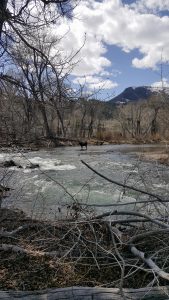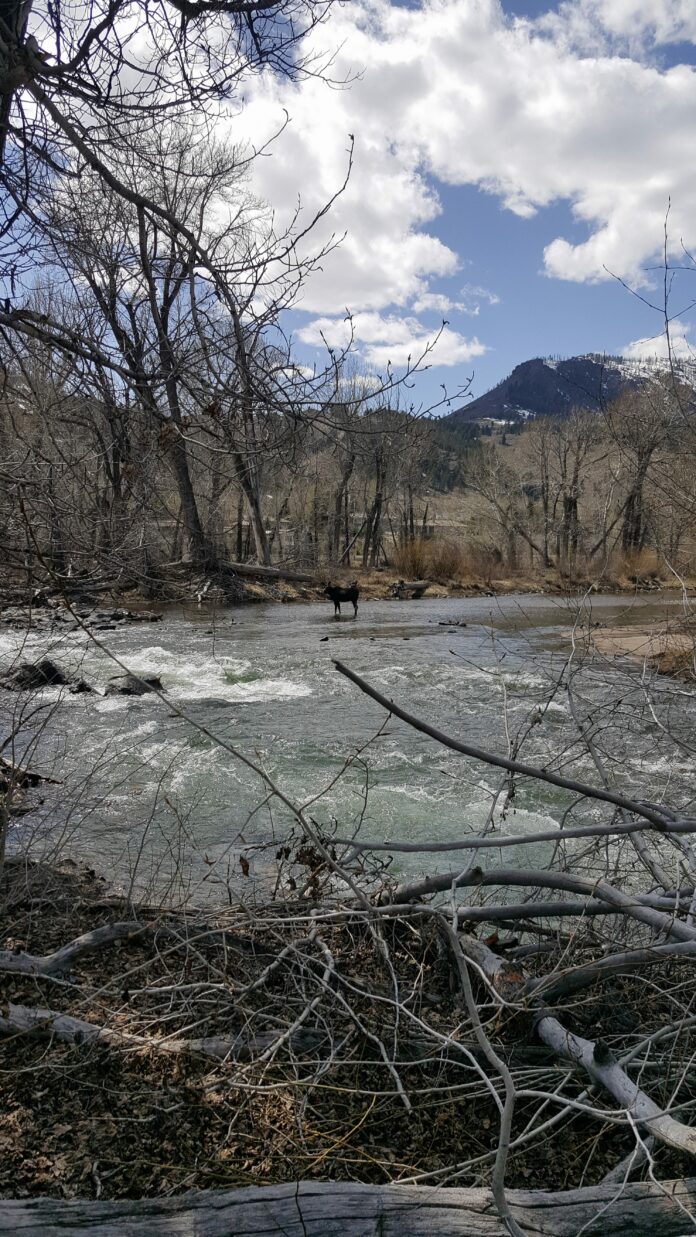BY HANNES THUM

The signs of springtime are unmistakable, now. What seemed like the faintest dusting of green on the tips of the cottonwoods and aspens along the river is now an explosion of neon buds and leaves running through our valley, moving north each day as the snow upvalley retreats upwards. The sun climbs higher in the sky each day and lingers longer in the evenings.
Life returns to the valley after being hunkered down through the snowstorms of winter.
Sandhill cranes migrate through these parts this time of year, following their instincts or their senses or their whatever as they travel North America (the whole continent!). One of them flew over my neighborhood early one morning last week—I heard its rattling call long before I saw the bird itself, my head craned back to see this creature flapping above.
The elk and deer and pronghorn are on the move again. The kestrels are back. The bears are awake. Insects are going wild with the new plant growth.
Norman Maclean famously wrote, “All there is to thinking is seeing something noticeable which makes you see something you weren’t noticing which makes you see something that isn’t even visible.”
The thing that we can see, plainly: that the trees are growing green buds and leaves on their slender branch tips. What we may not have been noticing: the systems of life busily (very busily) returning to our valley after a long and snowbound winter, moving and eating and growing and breathing and mating and raising. The invisible: the chemistry of photosynthesis underlying all of this, transferring solar energy into living tissue.
Photosynthesis, the greatest of all of life’s inventions. There is hardly another process we could even imagine that could so effectively power life as we know it. Photosynthesis, the invisible but vital process where plants take carbon dioxide and water and sunlight and build their bodies, feeding in turn every other living creature you can name. Photosynthesis, the connection between the sun and life itself.
We don’t know how many stars there are in this universe. We may never know. But, there’s a lot of them, and there are a lot of planets orbiting those stars. Are there creatures out there on those planets that have figured out another way to live? Another version of something photosynthesis-like? Some other process to turn the energy of the universe into the energy of life? Maybe. Maybe not.
That something-from-nothing alchemy. That creation of solid matter from a common liquid, from invisible air. The realignment of matter itself. Dormant all winter long, and suddenly awake again with the return of the sun. Turning basic ingredients from around the environment and making actual living creatures, as if the whole world was a scientist’s laboratory experiment and the sun was the power source striking inert materials into life.
Life, in spring, suddenly with a new world to explore and a fresh chance to take in the energy of the sun, provided by the plants. What a world.
Hannes Thum is a Wood River Valley native and has spent most of his life exploring what our local ecosystems have to offer. He currently teaches science at Sun Valley Community School

